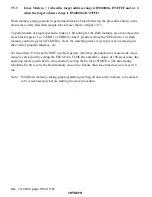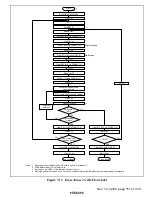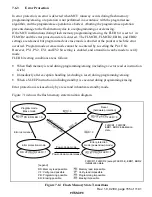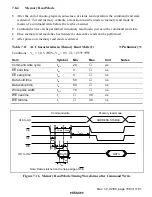
Rev. 1.0, 02/00, page 156 of 1141
7.7
Interrupt Handling when Programming/Erasing Flash Memory
All interrupts, including NMI input is disabled when flash memory is being programmed or erased
(when the P1 or E1 bit is set in FLMCR1, or the P2 or E2 bit is set in FLMR2), and while the boot
program is executing in boot mode
*1
, to give priority to the program or erase operation. There are
three reasons for this:
•
Interrupt during programming or erasing might cause a violation of the programming or
erasing algorithm, with the result that normal operation could not be assured.
•
In the interrupt exception handling sequence during programming or erasing, the vector would
not be read correctly
*2
, possibly resulting in MCU runaway.
•
If interrupt occurred during boot program execution, it would not be possible to execute the
normal boot mode sequence.
For these reasons, in on-board programming mode alone there are conditions for disabling
interrupt, as an exception to the general rule. However, this provision does not guarantee normal
erasing and programming or MCU operation. All requests, including NMI input, must therefore
be disabled inside and outside the MCU during FWE application. Interrupt is also disabled in the
error-protection state while the P1 or E1 bit remains set in FLMCR1, or P2 or E2 bit remains set in
FLMCR2.
Notes: 1. Interrupt requests must be disabled inside and outside the MCU until data write by the
write control program (vector table and NMI processing program) is complete.
2. The vector may not be read correctly in this case for the following two reasons:
•
If flash memory is read while being programmed or erased (while the P or E bit is set
in FLMCR1), correct read data will not be obtained (undetermined values will be
returned).
•
If the interrupt entry in the NMI vector table has not been programmed yet, interrupt
exception handling will not be executed correctly.
















































